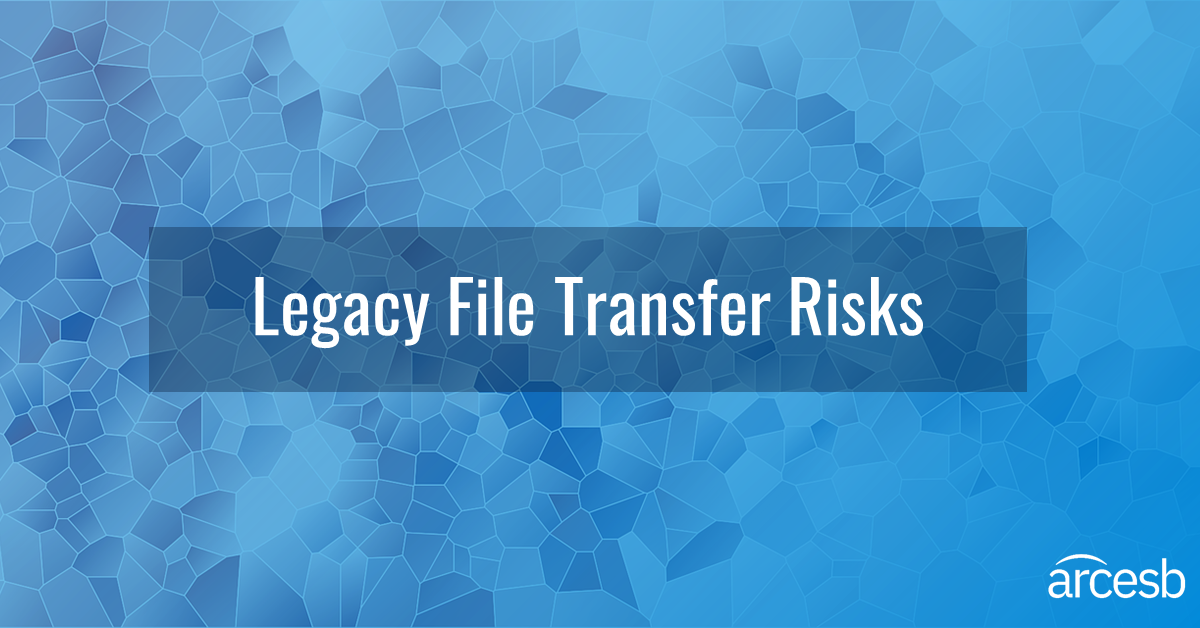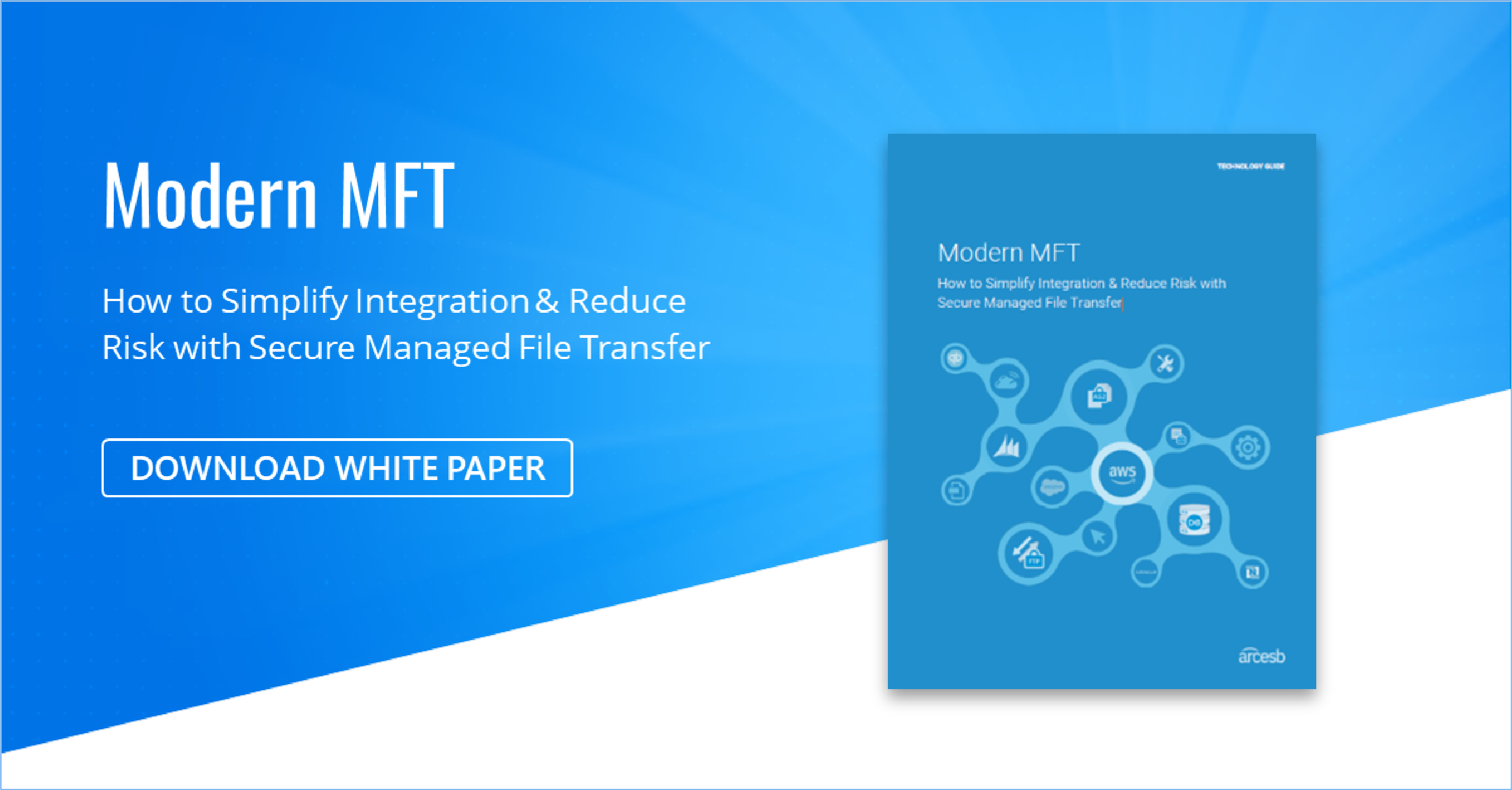What You Risk When You Keep Your Legacy File Transfers

Many organizations continue to use legacy solutions to perform critical enterprise file and data transfers. These outdated technologies can include everything from unsecured FTP clients to hand-coded scripts and legacy “managed file transfer" tools.
While these collections of ad hoc approaches typically come into being one at a time, without purposeful planning, they tend to stick around far too long in many organizations. The rationale? Why fix a setup that works, at least well enough, anyway?
But what many organizations miss is that despite the apparent safety of these familiar approaches, sticking with legacy file transfer options entails very real risks and ongoing costs in the form of:
- Inadequate Security
- Brittle, Unreliable File Transfers
- Broken, Duplicate Processes
- Difficulty Managing & Upgrading Solutions
- Compliance Risks from a Lack of Auditability
Poor Security
Legacy file transfer technology can leave organizations unnecessarily vulnerable to security breaches. If critical security patches are unavailable, or if organizations miss them because their attention is focused elsewhere, the legacy system will be unprotected from malicious actors ready to use old security exploits to expose the network.
Any resulting attacks can lead to bad PR, loss of customers, and a substantial financial impact. For example, the Ponemon Institute/IBM Security 2019 Cost of a Data Breach report found that over the past five years, the average cost of a data breach has increased by 12% to $3.92 million. Inadequate security can also lead to non-compliance with regulations such as HIPAA, PCI, GDPR, and CCPA, resulting in sizable penalties.
And when it comes to critical enterprise data movements, organizations must secure many potential vulnerabilities.
Learn How to Mitigate The Most Common File Transfer Security Risks
Unreliable Systems
Legacy systems that are no longer supported by their vendor can easily become unreliable, leading to downtime and loss of data that impact the bottom line.
For example, say you're a supplier to an automobile manufacturer. More than 10,000 parts go into the manufacture of a single automobile. If a system outage prevents you from sending POs or delivering ship notifications to your trading partners in the alloted window, the part — which can be as small as a single screw — can fail to make it to the assembly line in time.
These unreliable file transfers lead to:
- Lost orders
- Missing components that slow down production process
- Unhappy customers
- Lagging invoices and payments
Assembly line stoppages impact manufacturer revenues, and B2B trading relationships can suffer.
Broken, Duplicate Processes
Many legacy file transfer solutions only do one thing, transfer files. But to make use of those files, you ultimately need to fulfill additional processes, such as loading the files into backend systems, following pre-set business automation rules. To obtain a comprehensive solution in the past, organizations were forced to integrate several point solutions.
And having multiple systems resulted in a number of costs. Organizations incurred costs for multiple software licenses. Then, they would have to integrate these solutions, requiring teams to hire consultant experts or pull existing IT resources away from other projects that could potentially deliver far greater business value.
Worse, many organizations even lacked a central means of moving files & data, requiring file-to-backend integrations with a messy hodgepodge of scripts, ad hoc FTP clients, SFTP clients, and other tools, wasting money on not only duplicate software, but also duplicate maintenance.
Difficult to Manage and Upgrade
Maintaining outdated tools is far more difficult and expensive than it is for modern solutions. By some estimates, legacy systems cost organizations 10-15 percent more per year just for maintenance alone.
If the legacy technology has become rare, it may cost more to hire system administrators familiar with it. Alternatively, you'll have to pay for someone to learn how the technology works.
The problem is compounded when multiple file movement systems are integrated, as managers lose visibility into end-to-end integration processes, making troubleshooting more complex.
In particular, legacy scripts are often poorly documented. If the script developer leaves the company, it can be difficult for his or her replacement to figure out the scripting logic. The new developer may have to resort to rewriting scripts, increasing overall costs to the company.
Over time, legacy systems must be upgraded. For example, your organization may want to take advantage of new API technologies, updated protocols, or modern encryption algorithms. In general, it's usually cheaper to buy a solution with new features rather than build these features yourself.
Moreover, many legacy solutions cannot easily meet new technological demands, scaling inefficiently and at high cost.
Lack of Auditability
Many legacy systems lack comprehensive audit capabilities. Without those features, you may be unable to retrieve the data you need to address issues that may arise with your trading partners. For example, say you receive a PO from your trading partner along with their transaction log, and you send them an invoice at the end of the month. If something is missing, you may have to go back and view the documentation for the transactions. An inability to locate the necessary documents means time spent in other systems to track down what you sent or, worse, lost revenue you cannot include in an invoice.
Lack of auditability also makes it impossible to comply with GDPR, PCI, HIPAA, CCPA and other regulations, or to meet internal or external audit requirements.
Not knowing who accessed which files and when can also compound any security problems. Moreover, having no visibility into processes means you can miss opportunities for improvements.
Modernizing Your Legacy File Transfers
According to a study by Vanson Bourne, moving away from legacy systems to IT modernization can reduce business-operating costs by 13% or more. Modernizing to a secure managed file transfer solution allows you to capture these savings, while addressing the many disadvantages of legacy systems.
To learn how to modernize & streamline your data movements, slash operating costs, and strengthen your relationships with trading partners. download our guide Modern MFT: How to Simplify Integration and Reduce Risks with Secure Managed File Transfer.

